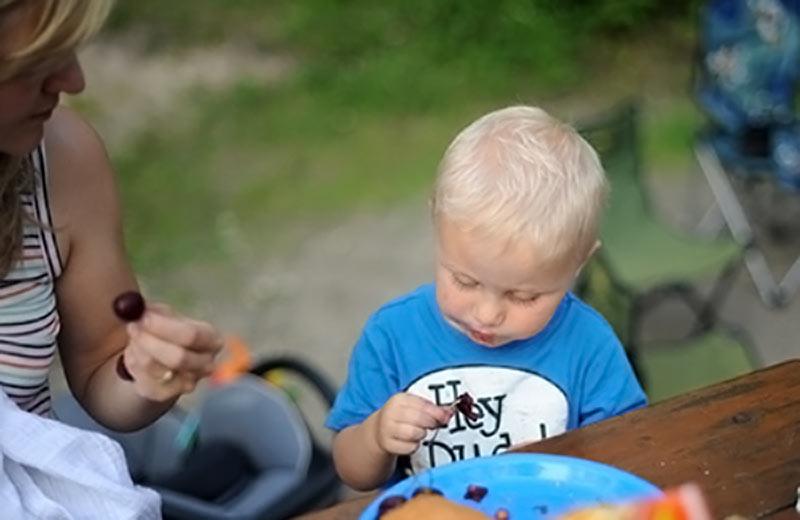It's lunch time. You prepare a meal and sit down to eat with your kid(s). They eat all of the [food x] but leave [food y] completely untouched. What's the deal? Is it always going to be like this? Why can't they just eat a bit of everything? How do kids go from here ("rejecting" certain foods) to there (accepting a wide variety of foods)?
Come on a little trip with me!
Imagine you take a trip to an unfamiliar place. Somebody presents you with bread, cheese, and a bowl of … green, lumpy, semi-solid something. They gesture for you to eat it. You hesitate. You feel anxious. You don't know what this is – you certainly don't feel like eating it!
Stay on this trip with me. Imagine now that you eventually learned to like that green, lumpy, semi-solid something, and now you even look forward to when it might be served again! Whaaaat? How could it be? How did you come to accept, and even like, that food?
It could look like this:
First, you looked to see that other people were actually eating it. But you looked at the "semi-solid something" and decided that you were not yet ready to try it. The next week, it was offered again, and now it was a little less scary. Maybe you poked at it with your spoon. Later, you gave it a sniff. Then, you stuck your finger in it. Maybe someone told you what was in the dish. Maybe you had the opportunity to see it being prepared, and you even got to help. Eventually, you put a little in your mouth but then spit it into a napkin. You decided it was tasty, and that you wanted a little more of this … broccoli soup or green jello or guacamole or whatever this dish is in your mind.
Back to reality. Think of a time when you learned to like a new food. What helped you to learn?
Kids are often unsure about new or unfamiliar food. With time and practice, they can learn to eat a variety of foods. We can help to make this learning process feel safe.
Here are some things to try to support your kids to learn to eat a variety of foods:
- Make the same meal or snack for everyone. Sit and eat together. Seeing others eat a food is a great way to learn about it.
- Offer new foods with familiar foods. If they are not yet comfortable with one food, kids can eat from the other items at that meal or snack.
- Serve new foods over and over, without pressure or praise. Kids may need to see a food 15 to 20 times before they decide to eat it.
- Be honest about what you are serving. Kids need to experience foods in order to learn.
- Teach your kids to politely turn down food they aren't yet ready to eat.
- Respect tiny tummies. Serve a small amount to start and allow seconds. Kids' hunger and appetite change from day to day, meal to meal.
- Involve kids in growing and cooking food, and in packing their lunch.
- Praise kids on their table manners, not on how much or what they eat.
- Expect that in time your "eater in training" will learn to accept a variety of food. They will learn at their own pace.
For more information, see: Coaching Kids to Become Good Eaters and The Picky Eater.














Comments